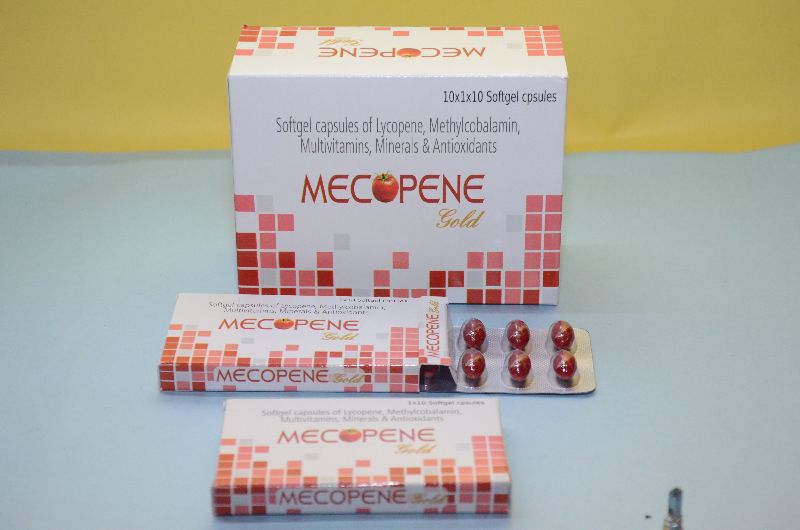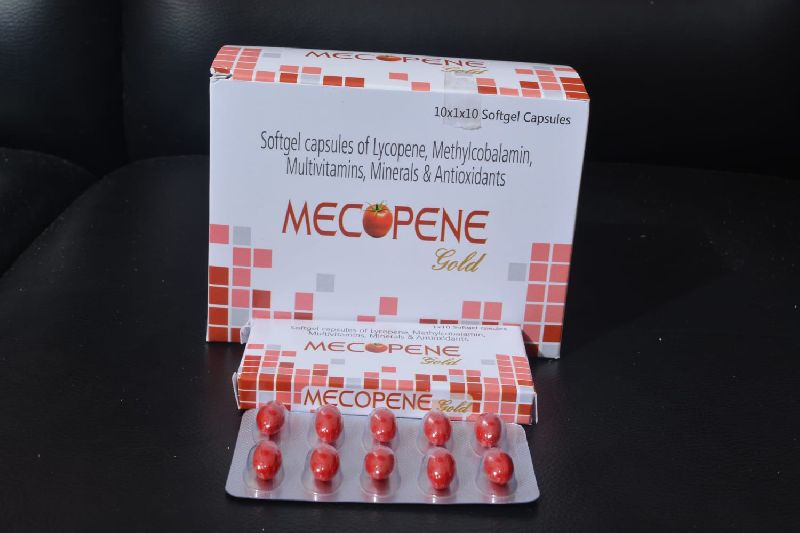Company Information
Ask for more detail from the seller
Contact SupplierMethylcobalamin1500mcg+Lycopene5000mcg+Ala100mg+Biotin100mcg+Zinc27.5mg+Copper2mg+vitC-5mg+Selenium-75mg+Magnesium_1.4mg+vit A-2500IU+vit E-5IU.
lycopene : lycopene from the neo-latin lycopersicum, the tomato species, is a bright red carotene and carotenoid pigment and phytochemical found in tomatoes and other red fruits and vegetables, although lycopene is chemically a carotene, it has no vitamin a activity. foods that are not red may also contain lycopene, such as brown beans or parsley.
alpha-lipoic acid (ala) : also known as thioctic acid, is a naturally occurring compound that is synthesized in small amounts by plants and animals, including humans (1, 2) . endogenously synthesized la is covalently bound to specific proteins , which function as cofactors for several important mitochondrial enzyme complexes .
zinc : zinc is an important trace mineral that people need to stay healthy. this element is second only to iron in its concentration in the body
selenium : selenium is a mineral found in the soil. selenium naturally appears in water and some foods. while people only need a very small amount, selenium plays a key role in the metabolism.
magnesium : magnesium is a mineral that is present in relatively large amounts in the body. researchers estimate that the average person’s body contains about 25 grams of magnesium, and about half of that is in the bones. magnesium is important in more than 300 chemical reactions that keep the body working properly. people get magnesium from their diet , but sometimes magnesium supplements are needed if magnesium levels are too low. dietary intake of magnesium may be low, particularly among wome
copper : copper is a mineral. it is found in many foods, particularly in organ meats, seafood, nuts, seeds, wheat bran cereals, grain products, and cocoa products. the body stores copper mostly in the bones and muscles. the liver regulates the amount of copper that is in the blood . copper is used as medicine.
vitamin a : is a group of unsaturated nutritional organic compounds, that includes retinol, retinal, retinoic acid, and several provitamin a carotenoids, among which beta-carotene is the most important. vitamin a has multiple functions:
vitamin c : is an essential nutrient for humans and certain other animal species. vitamin c refers to a number of vitamers that have vitamin c activity in animals, including ascorbic acid and its salts, and some oxidized forms of the molecule like dehydroascorbic acid. ascorbate and ascorbic acid are both naturally present in the body when either of these is introduced into cells, since the forms interconvert according to ph.
vitamin e : vitamin e refers to a group of ten lipid-soluble compounds that include both tocopherols and tocotrienols. of the many different forms of vitamin e, γ-tocopherol is the most common in the north american diet.
biotin : biotin, also known as vitamin h or coenzyme r, is a water-soluble b-vitamin (vitamin b7).
it is composed of a ureido (tetrahydroimidizalone) ring fused with a tetrahydrothiophene ring. a valeric acid substituent is attached to one of the carbon atoms of the tetrahydrothiophene ring. biotin is a coenzyme for carboxylase enzymes, involved in the synthesis of fatty acids, isoleucine, and valine, and in gluconeogenesis
indications :



